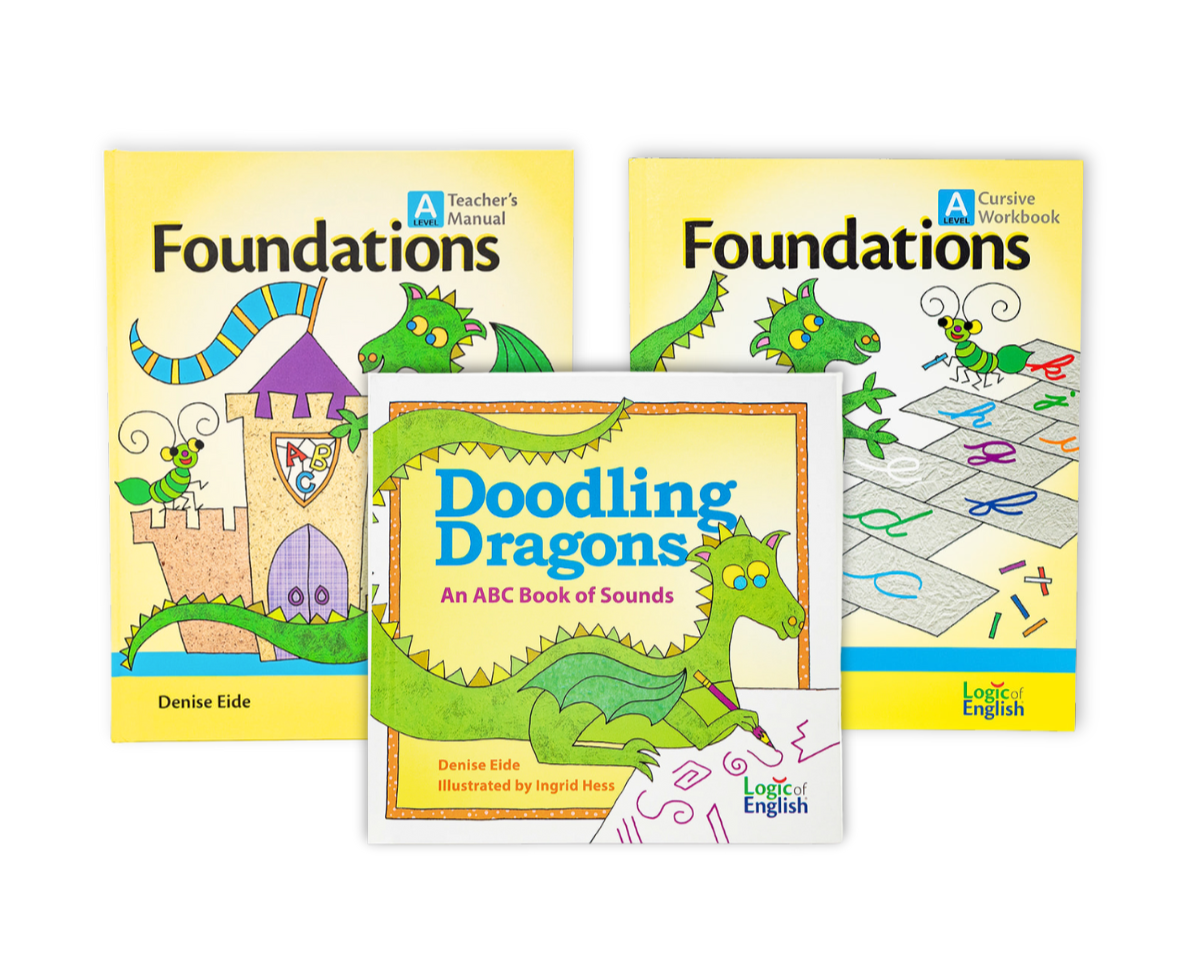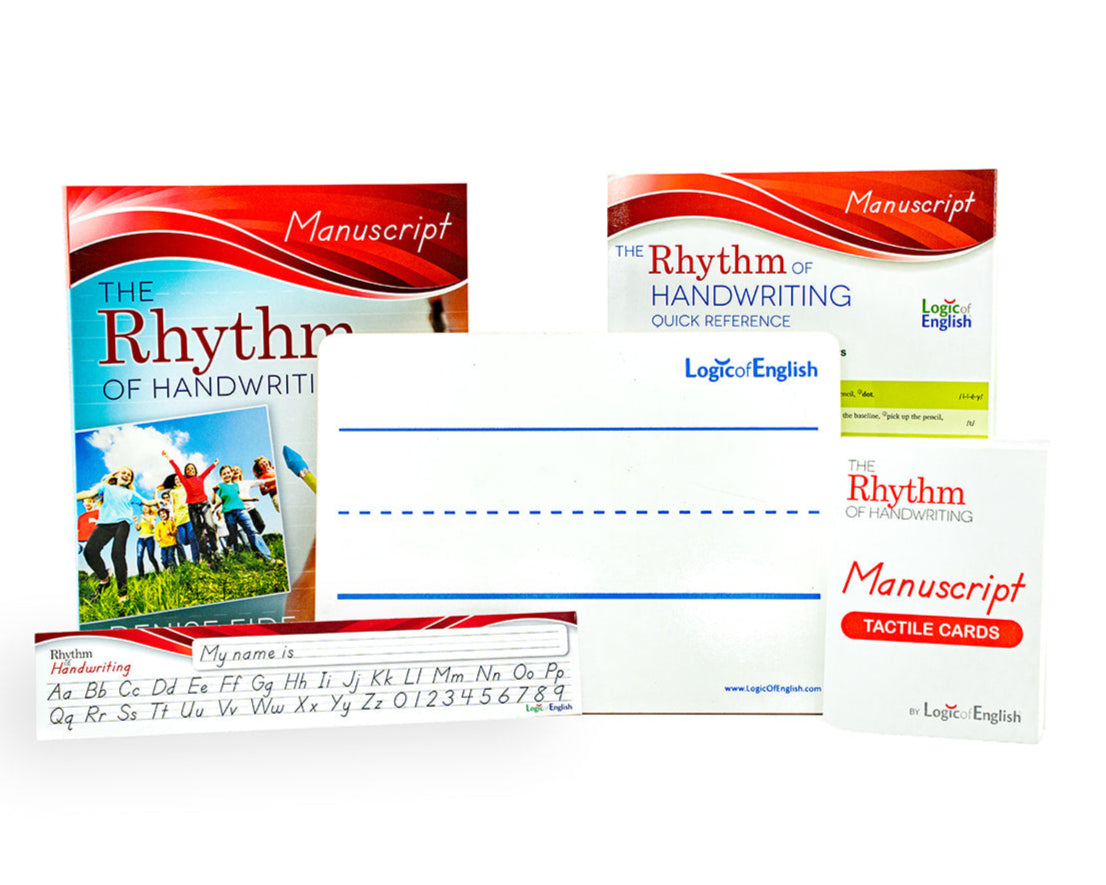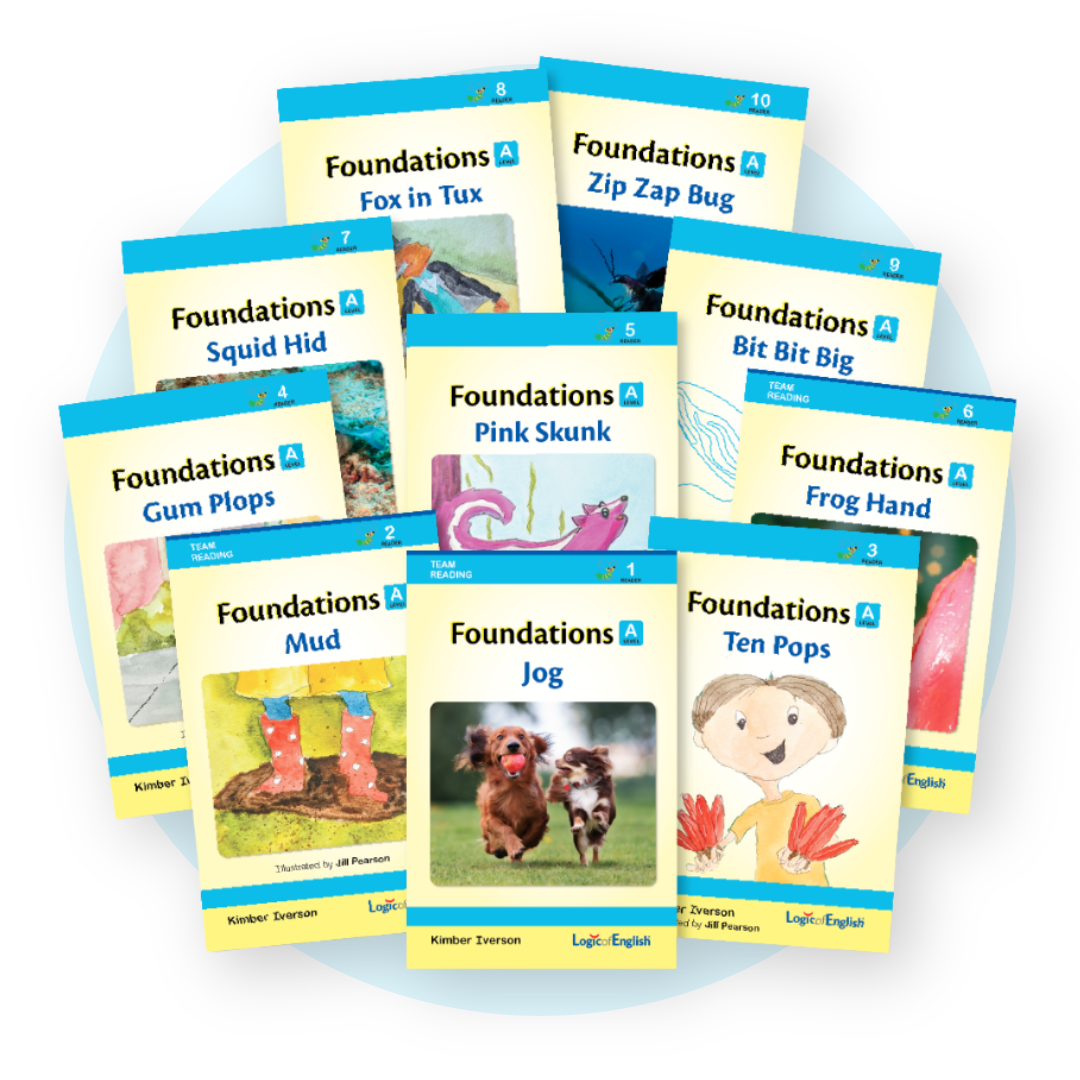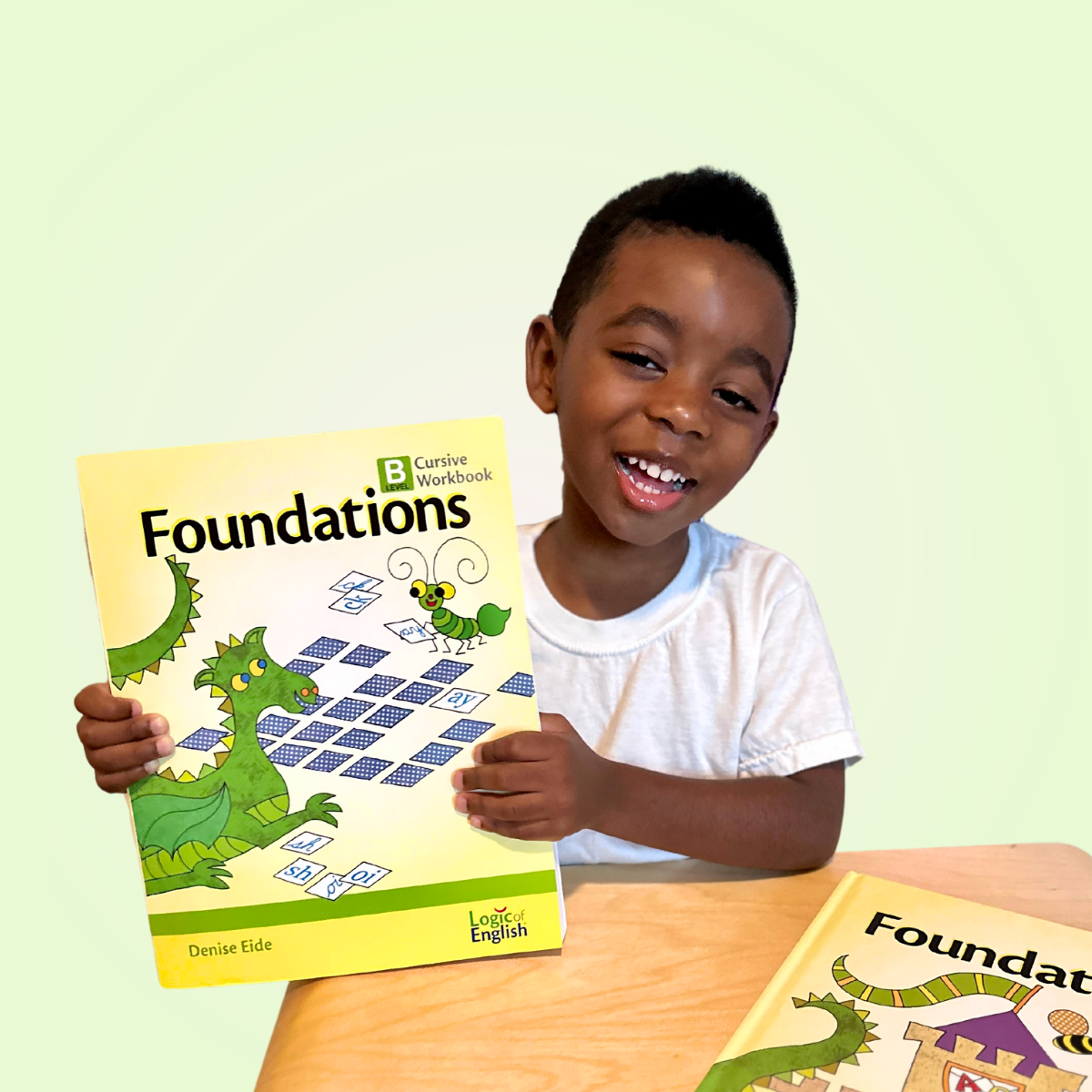
Because Literacy Leads to a Brighter Future
Easy-to-use tools for a joy-filled learning experience!
-

Foundations
Phonics, spelling, vocabulary, grammar, and handwriting curriculum designed for ages 4-7.
-

Essentials
Phonics, Spelling, Grammar, and Vocabulary curriculum designed for ages 8 and up.
-

Rhythm of Handwriting
Help students develop fluid, legible handwriting in cursive or manuscript.
-

Game Book
Logic of English Game Book contains over 300 games designed to help your students master the foundational skills of reading, spelling and handwriting!
-

Sounding Out the Sight Words
Teach the phonics rules needed to decode high-frequency words!
-

Core Materials
From flashcards to game cards to quick references, our core materials will help you teach with success!
Resources to help you teach with confidence!

Coming Soon - Foundations A Readers
New Foundations A Readers will be available for purchase May 1! This set of ten engaging controlled texts is designed specifically for beginning readers. Like all Logic of English controlled texts, there is no reliance on sight words or patterns for beginning readers. Instead, these texts allow beginning readers to apply the phonograms they have learned throughout Foundations A to decode the text and strengthen the pathways they need in the brain to become strong readers.

Products and Curricula Based on Uncovering the Logic of English
Uncovering the Logic of English explains the logical patterns behind 98% of English words in an easy-to-read, straightforward manner. Our free resources and products take on the research presented in this book and convert it into effective practice and methods.

Introduce Students to the Neuroscience of Reading With How Your Brain Learns to Read
With colorful illustrations and an engaging storyline, How Your Brain Learns to Read translates the neuroscience of reading into an easily understood topic for children and adults.
With this book, students will discover which regions of the brain are repurposed for reading, learn why reversals and mixing up letters like b and d are a common part of learning to read, practice and reinforce phonemic awareness skills with fun blending exercises, and begin learning phonics concepts needed to decode words!
The Red Breve | Logic of English Blog




















